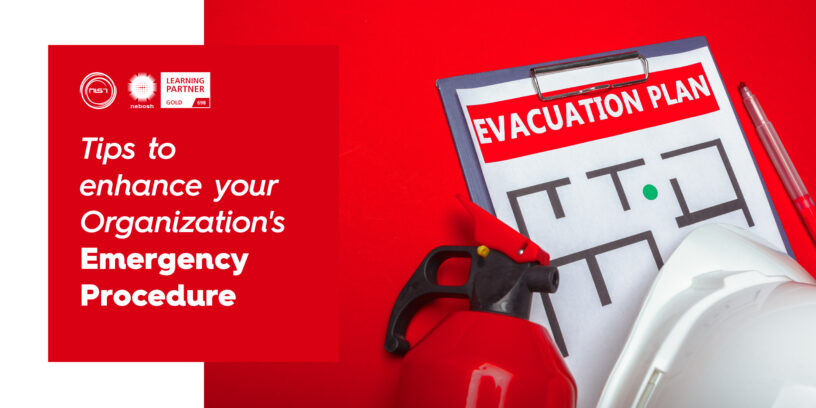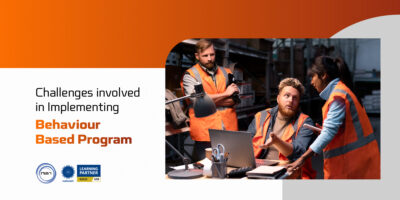Effective emergency procedures must be in place since emergency can occur anywhere and at any time. Being ready to act on emergencies can make all the difference in protecting your safety and the safety of others.
We’ll provide you the essential tips in this blog post on how to enhance your emergency procedures. These suggestions will help you be better prepared to respond to emergencies and potentially lessen the impact of the emergency. They range from performing regular training to keeping emergency equipment and developing ties with local emergency services.
1. Understanding the risks
The first step in enhancing emergency procedures is understanding the risks. This entails identifying potential risks and dangers in the job, neighborhood, or home and developing a plan that takes each situation into account.
You may create a thorough emergency plan that takes into account every conceivable circumstance by having a thorough awareness of the potential dangers and hazards that might arise. This strategy should outline how to form an emergency response team, locate emergency exits, create communication protocols, and train team members on what to do in case of an emergency.
2. Developing emergency plans
A crucial step in enhancing emergency procedures is creating an emergency plan. A document outlining the steps to take in the event of an emergency is known as an emergency plan. It’s crucial to create a thorough plan that addresses all potential emergency situations, including fires, accidents, medical problems, and natural catastrophes.
Select a team of individuals to be in charge of organizing the emergency response. Determine the possible risks and hazards at your workplace. Make sure that all emergency exits are prominently displayed and simple to find. Create a system of clear communication that will be used in an emergency. All team members should get training on emergency measures, including first aid, CPR, and evacuation procedures. To evaluate the success of the emergency plan, conduct frequent drills and exercises. Provide instruction on how to handle hazardous materials safely and how to react in case of an accident at workplaces where they are used.
3. Conducting training
For emergency procedures to be improved, training employees or team members is essential. A team’s members can be better prepared to respond quickly and efficiently by participating in effective training that can help them understand their roles and duties in an emergency, identify potential risks, and prepare them for those risks. By putting together this kind of training, you can make sure that everyone on your team is capable of responding to an emergency. A more effective and efficient emergency response can be achieved through regular training and refresher courses that serve to reinforce knowledge and abilities.
4. Effective communication
One of the most important aspects of emergency operations is effective communication. In an emergency, efficient communication may ensure that everyone on the team is on the same page, lessen confusion, and boost the likelihood of a successful response. Assign roles and tasks to distinct team members to facilitate effective communication. It is critical to exercise active listening during an emergency. This entails paying attention to what others say, asking clarifying questions, and responding properly.
5. Maintaining Equipment
Examine emergency supplies such fire extinguishers, first aid kits, and emergency lights. Inspecting for damage, ensuring that expiration dates have not past, and ensuring that equipment is in excellent operating order are all part of the inspection process.
Make sure that emergency equipment is readily available. Fire extinguishers, for example, should be put in obvious locations throughout the workplace, and first aid kits should be kept in areas that are easily accessible to all personnel. Ensure to replace any broken or outdated equipment. Equipment that has passed its expiration date may not function properly, while equipment that has been damaged can be hazardous to use.
6. Conducting Mock drills
Mock exercises are a crucial component of enhancing emergency protocols. Mock drills are simulated emergencies that give team members a chance to practice their emergency response techniques and pinpoint their areas of need. Include everyone on the team in the exercise, even if they aren’t necessarily involved in emergency response. By doing so, you can make sure that everybody is aware of the emergency protocols and knows how to react. After the drill, analyze the effectiveness of the drill. This could entail pointing out potential areas for improvement, like communication, evacuation protocols, and equipment usage.
You may make sure your team is ready to respond appropriately in an emergency by holding regular mock drills. Mock drills can also help discover emergency response protocol gaps and provide team members a chance to improve their abilities.
7. Update Emergency plans
A key component of enhancing emergency procedures is updating emergency plans. To keep them relevant and functional, emergency plans should be routinely reviewed and updated. You can make sure emergency plans are up to date and useful by periodically examining and revising them. This may enable you to react swiftly and efficiently in an emergency situation, thereby reducing its effects and maybe ensuring people’s safety.
Conclusion
Any organization or community must have a well-developed emergency procedure. The suggestions in this article—which include practicing regularly, selecting a responsible team, recognizing potential risks, and having open lines of communication—are all crucial components that can significantly improve emergency preparedness.
Please contact our safety experts at +91 8754465588 or info@nistglobal.com if you want to run an emergency mock drill in your company.We are NIST Global, one of the leading safety firms in India, and we offer services such as safety training, consulting, auditing, developing the content for e-learning courses, and other safety-related activities.














Leave a Reply